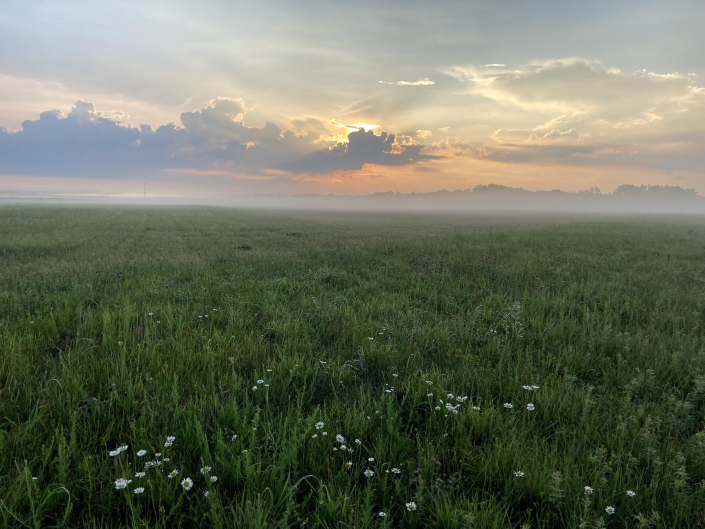2023 JB McGuire Grassland Bird Survey
by Meaghan Lyon, Wildlife Biologist
Each year since 2017, CWF has been teaming up with partners from the USFWS New Jersey Field Office to survey the JB McGuire Airfield for grassland birds during the breeding season. Part of a long-term monitoring project, the airfield has been undergoing habitat restoration to maintain native warm season grassland habitat. The habitat restoration efforts are nearly 70% complete with roughly 700 acres seeded since 2017 and another 100 acres to be completed the following year.
Six of the ground-nesting bird species documented at the airfield are State-listed as either endangered, threatened, or of special concern. The eastern meadowlark (Sternella magna), a member of the blackbird family, is a State Species of Concern. It prefers a minimum of ten to twenty acres of unfragmented dense grasses of medium height for nesting. The State-threatened grasshopper sparrow (Ammodramus savannarum) favors patches over 100 acres containing short- to medium-height bunch grasses interspersed with patches of bare ground, a shallow litter layer and scattered forbs. The savannah sparrow (Passerculus sandwichensis), also State-threatened, requires a mix of short and tall grasses, a thick litter layer, dense ground vegetation, and scattered forbs. Another member of the blackbird family is the State-threatened bobolink (Dolichonyx oryzivorus). Bobolinks prefer to place their nests in areas of greatest vegetative height and density and could potentially nest in patches as small as five to ten acres. The State-threatened horned lark (Erimophila alpestrias) nests in areas of barren ground with short and sparse cover and are quick to abandon sites as vegetation grows thicker.

